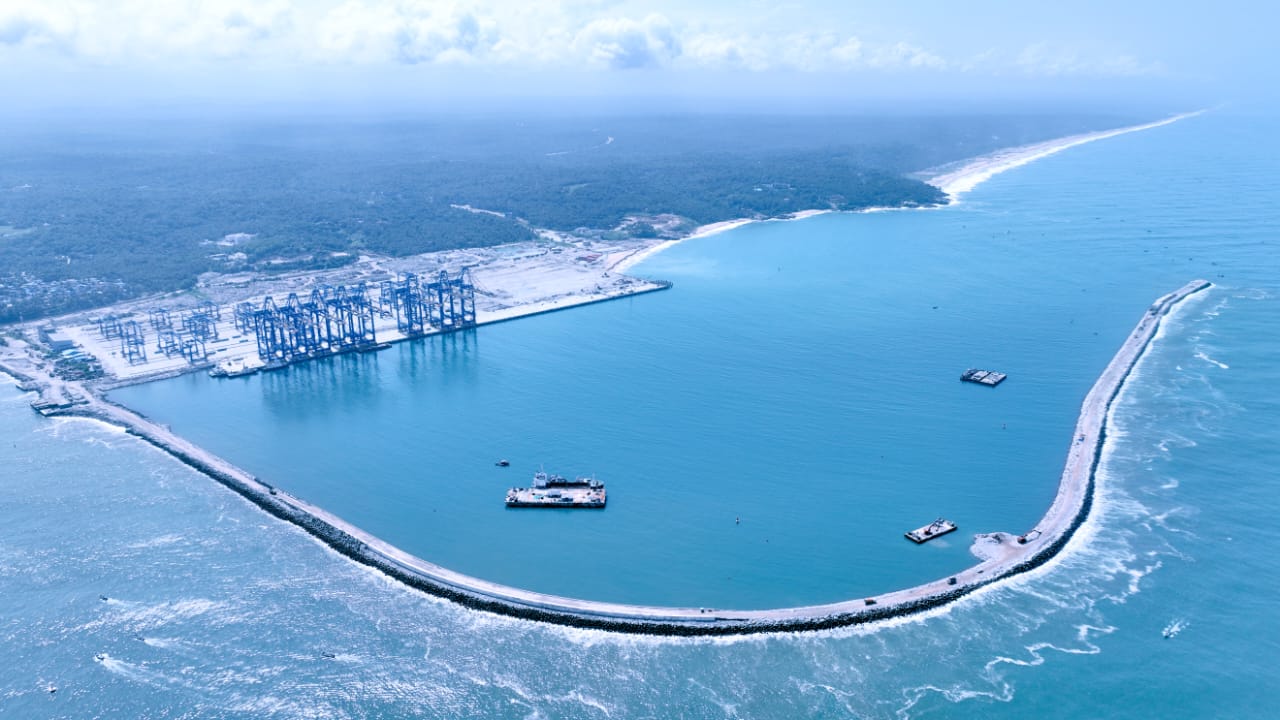Strategically located near key shipping routes, Vizhinjam's 18-meter deep draft will redirect Indian cargo from hubs like Colombo, Salalah, and Singapore, cutting transshipment costs, foreign exchange outflows, and boosting export competitiveness
Published Mar 10, 2025 | 7:18 PM ⚊ Updated Mar 10, 2025 | 7:18 PM

Vizhinjam International Seaport Thiruvananthapuram
Synopsis: The Vizhinjam International Seaport in Thiruvananthapuram has received environmental clearance for its second and third phases, accelerating the project’s completion. The expansion includes a 1,200-meter container terminal, additional berths, and liquid cargo facilities. With a capacity to handle 30-45 lakh containers annually, the port is set to enhance India’s global trade position and generate significant revenue ahead of schedule
The Vizhinjam International Seaport in Thiruvananthapuram has received environmental clearance for its second and third phases, paving the way for the project to be completed ahead of schedule.
Ports Minister VN Vasavan confirmed that the Union Ministry of Environment, Forest and Climate Change issued the clearance order.
The development will expand the container terminal to 1,200 meters, increase the breakwater by 900 meters, and include the development of container storage yards and associated infrastructure.
This expansion will also introduce 1,220 meters of multipurpose berths, 250 meters of liquid berths, and liquid cargo storage facilities.
With the environmental clearance granted, the government aims to complete the Vizhinjam Seaport project earlier than expected, generating significant revenue.
The port is designed to handle a minimum of 30 lakh containers per year, which can be increased to 45 lakh with automated systems.
By 2028, Vizhinjam is expected to become the container terminal with the highest installed capacity in South India. The development cost of the second, third, and fourth phases is estimated at ₹10,000 crore. Developed under the Public-Private Partnership (PPP) model, the seaport will significantly impact India’s global trade standing.
Strategically located near key international shipping routes, Vizhinjam boasts a natural deep draft of 18 meters, providing logistical advantages.
The port will help redirect Indian cargo from transshipment hubs like Colombo, Salalah, and Singapore, significantly reducing transshipment costs, foreign exchange outflows, and boosting the cost competitiveness of Indian exports and imports.
The project is expected to attract investments, establish Vizhinjam as a global trade hub, and drive regional industrial growth.
(Edited by Ananya Rao with inputs from Dileep V Kumar)
